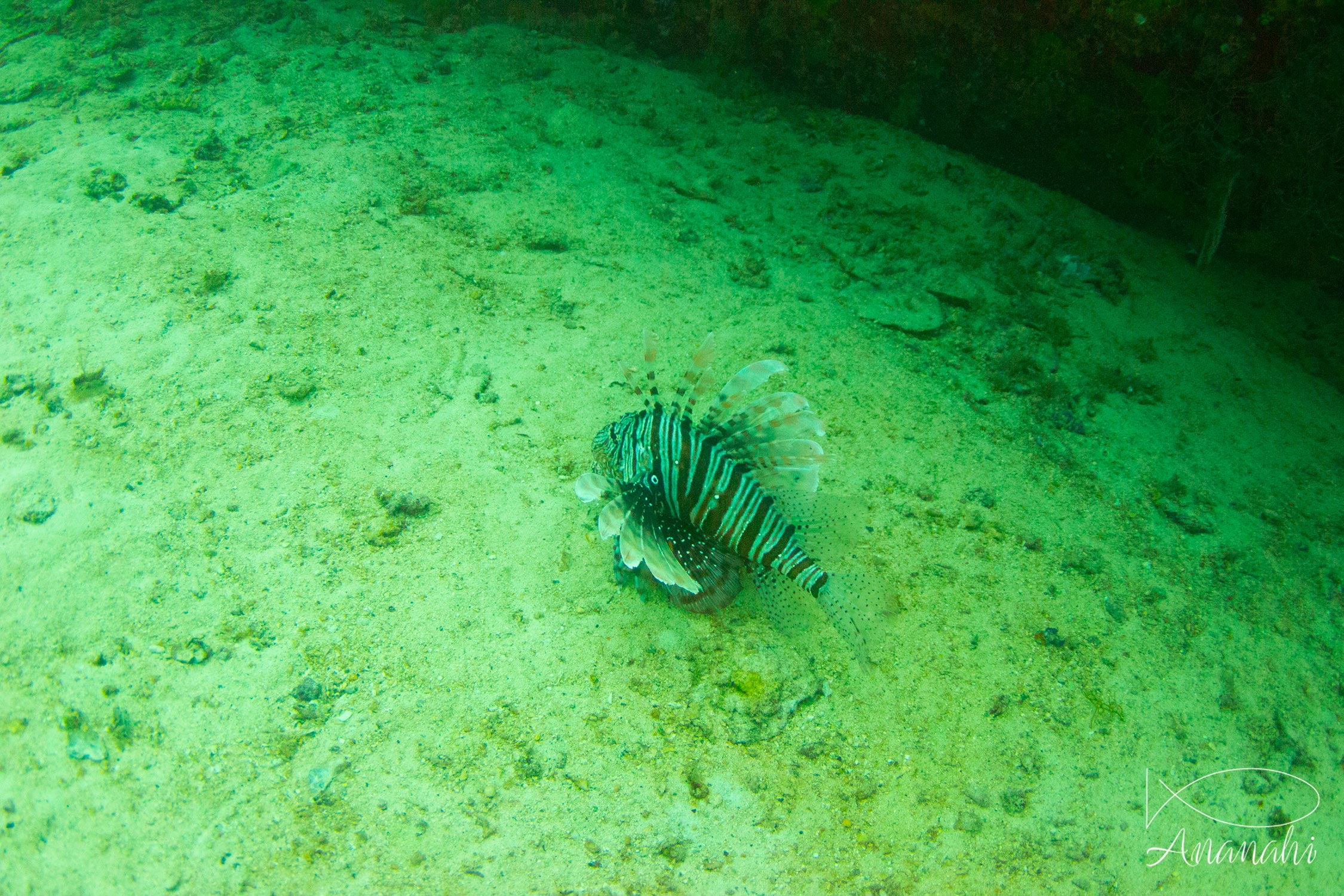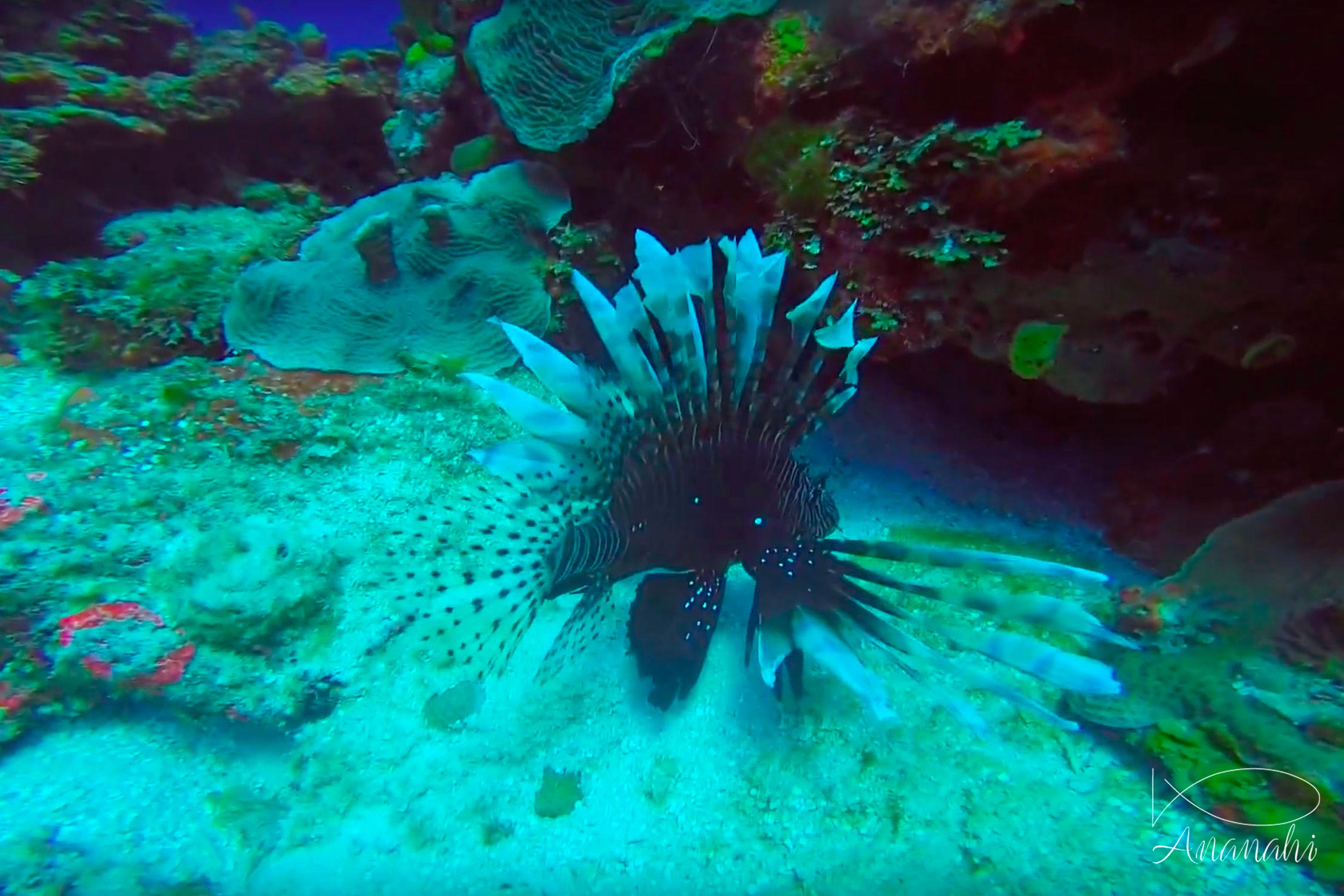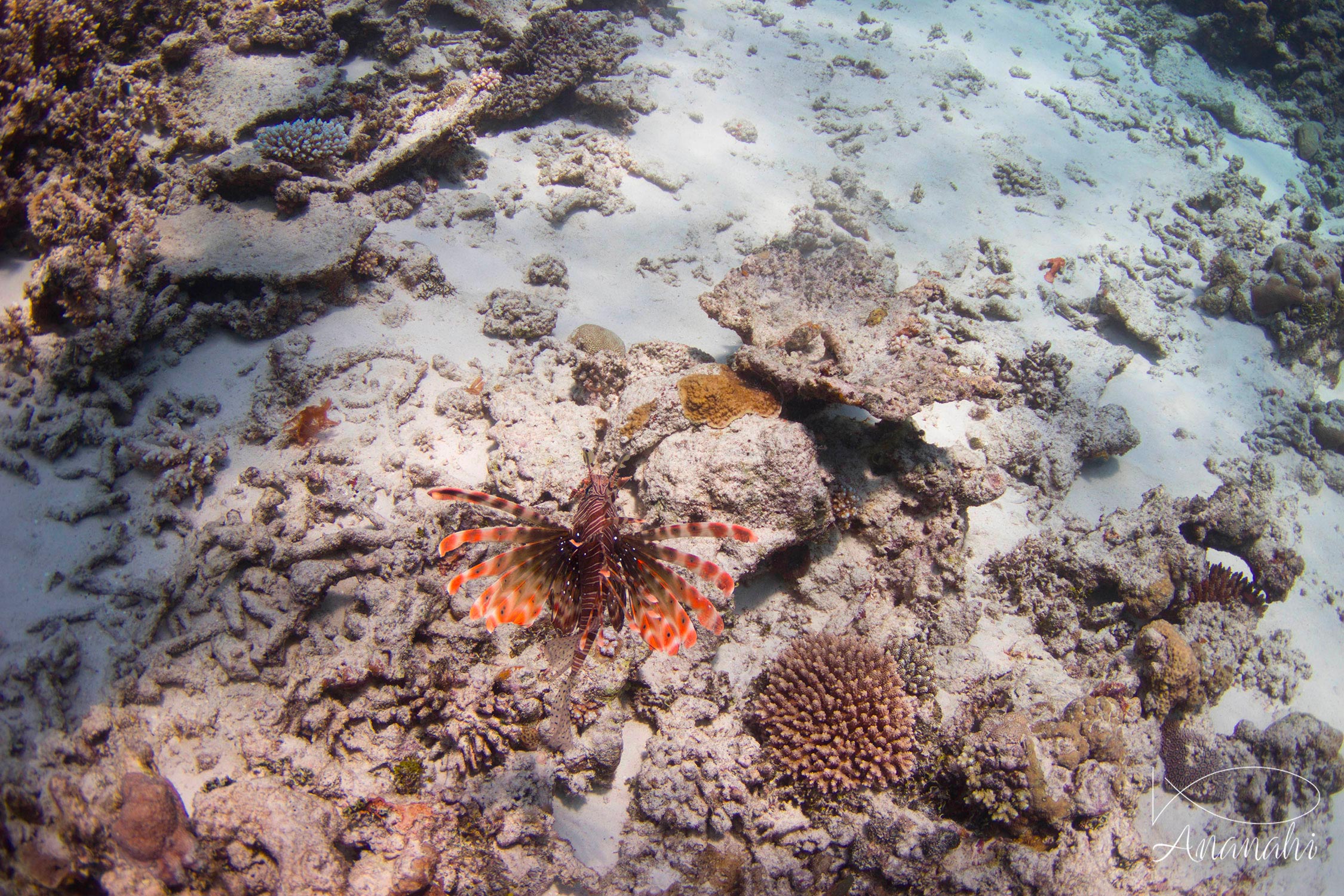
Scientific name: Pterois volitans / Pterois miles
Size: Up to 15 inches
Color: Red to dark brown and white
Distinguishing feature: Massive body with white and brown vertical stripes. Thorns of the dorsal and long pectoralales have a veil over the entire length.
Where did we see it: Zanzibar, French polynesia, Mayotte, Maldives

Scientific name: Pterois volitans / Pterois miles
Size: Up to 15 inches
Color: Red to dark brown and white
Distinguishing feature: Massive body with white and brown vertical stripes. Thorns of the dorsal and long pectoralales have a veil over the entire length.
Where did we see it: Zanzibar, French polynesia, Mayotte, Maldives
Juvenile has a very dark color drawing towards the black and very long pectoral spines.
The Pacific and Indian Ocean species can't be distinguished with the eye only.
Venom glands are integrated into the spines of scorpion fish. This venom causes severe pain and can be fatal. That's why this species does not really have any predators (except trumpetfish and moray eels).
This species was introduced to the Caribbean in 1992 following the destruction of an aquarium by Hurricane Andrew. The first observations were made in 1994 and its extension has been very important since then.





Some sharks can stay motionless on the sand (white tips reef sharks, nurse sharks, etc.).
These sharks don't have to swim to bring oxygen to their gills like other sharks (grey, hammerheads tc.)
The whale shark is the largest fish in the world!
Some whales are larger, but they are mammals, not fish!
Parrotfish create a protective envelope around them when they are sleeping.
So, don't put the light on them during night dive to don't to wake them up and break this envelope.